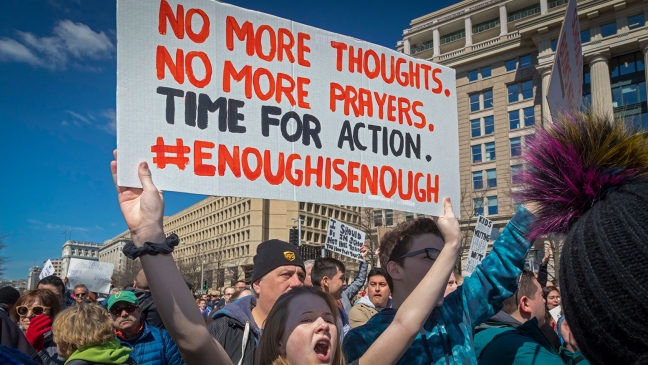The most important commitment a school gives to a parent is that it will keep a child safe. The tragic events in Texas this week demonstrated once again just how impossible keeping that promise is, if society isn’t willing to step in to support schools to do that.
It’s a point that Gordon Jeyes, director of education for Stirling Council at the time of the attack on Dunblane Primary School in 1996, made on the 20th anniversary of the tragedy.
“The effectiveness of any attempt to protect children is dependent on the willingness of society as a whole,” he wrote in Tes. “If a society cannot be persuaded to prioritise its most vulnerable, it can, and should, be forced to by effective legislation.”
In the US, it is clear that legislation around gun controls won’t happen any time soon. There have been too many tragedies after which nothing happened to have any confidence that action by that society to keep children safe will be taken.
Safeguarding in schools
In the immediate aftermath, the talk was, instead, about arming teachers (as it has been after every recent school shooting - see our report following the tragedy at Sandy Hook). US society is, once again, saying: “This is your problem, school staff, not ours.”
In the UK, thankfully, the response to Dunblane was that action against gun ownership was taken and, since then, we have not had any similar events in a school setting, which is something we should never take for granted. Yet we must also recognise that society still fails to keep children safe from other dangers and there is still much that needs to change.
Two reports this week attempted to define what that change might look like. Both proposed that schools should be a much bigger part of the safeguarding process.
The commission into the deaths of Star Hobson and Arthur Labinjo-Hughes, and the independent review of children’s social care, came to the same conclusion - that schools need to be recognised as statutory safeguarding partners, alongside the police, clinical care commissioning groups and local authorities.
This may mean that schools are better able to influence the outcomes of children they have identified as being vulnerable, and as the children’s commissioner, Rachel De Souza, wrote, it will ensure the voice of school staff is heard. However, this has to be the beginning of the conversation, not the end.
Keeping children safe
As a society, we need to take a long, hard look at the conditions that create vulnerability for young people and their families, and we need to unpick what has to be done to alleviate those conditions. That means hard choices on funding, on systems, on policy. It means facing up to our weaknesses. It means, as needs to happen in the US, that some hard truths will have to be forced on those who don’t want to hear or accept them.
Without all this, we’re setting schools up to fail. We’re asking school staff to keep children safe without the collective, community support to enable them to do it. They can’t protect children if the child and adolescent mental health services waiting list is 18 months, if social care is in tatters, if poverty is rife, if the police lack resources, if adult education and health services are simply not working, if schools are demonised in the press, if communities have no incentive to provide and look out for each other.
As Jeyes wrote, on the anniversary of Dunblane: “Tragedy can be a catalyst for real change, if that is the will of the people.”
We have to ask ourselves, as tragedy after tragedy unfolds and little changes, is the will actually there?





